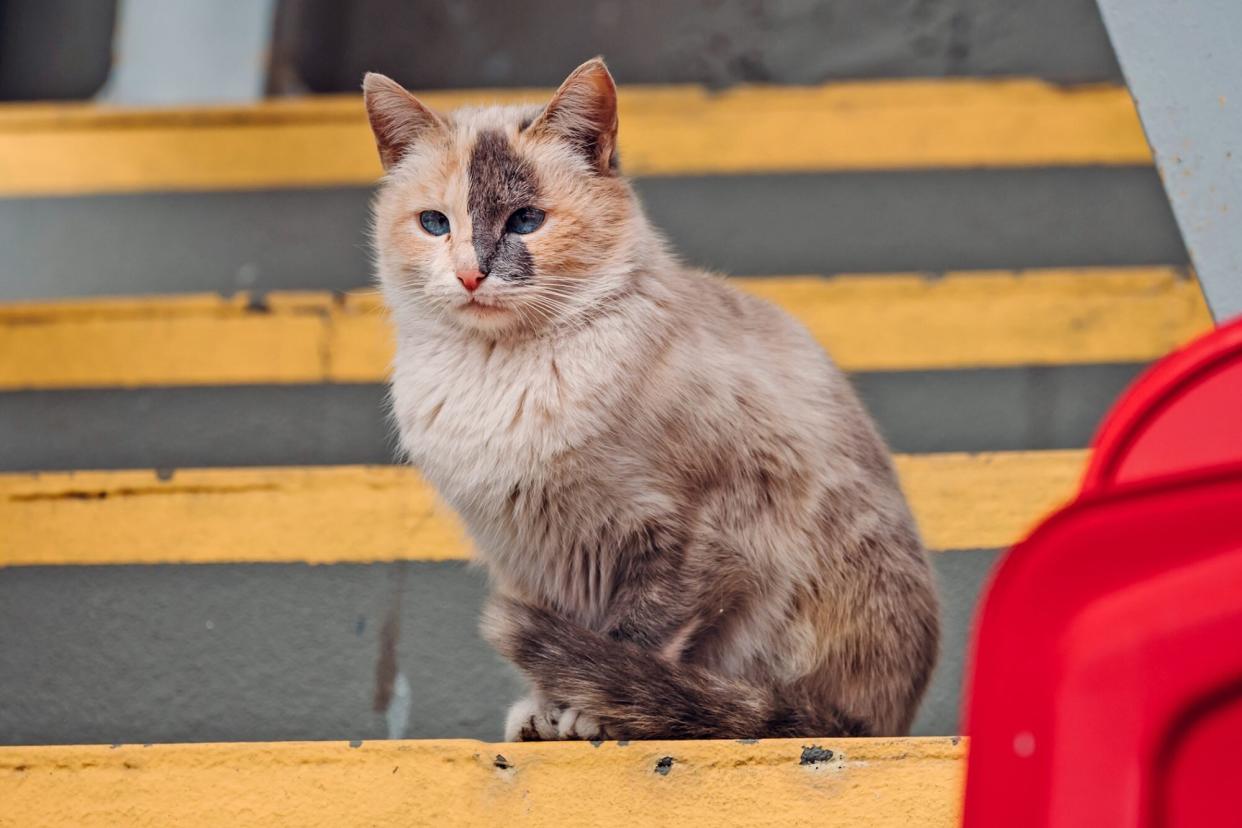Dozens of Feral Cats Have Infiltrated an MLB Stadium: Here's Why They Get to Stick Around

Kosmogenez / Getty
RingCentral Coliseum, the beleaguered home of Major League Baseball's Oakland Athletics, is hosting some new tenants: a colony of feral cats that—perhaps unlike the baseball team—isn't going anywhere.
Instead, the cats will continue to call the massive, food-filled Coliseum home as local volunteers and vets will administer some feline contraception through a humane process called TNR.
"This is a best-case scenario, in that the people at the Coliseum care about the well-being of the cats and share our goals for a humane solution," Ann Dunn, director of Oakland Animal Services, tells Daily Paws.
During the early stages of the COVID-19 pandemic, the Coliseum mostly sat empty, allowing the colony of around 30–50 cats and kittens to make the 130-acre east Oakland property their territory. But Dunn told The Oaklandside that "if you see that many, there are probably more."
It may sound like an adorable problem but the feral cat issue in the United States is not cute. Peter J. Wolf, a research and policy analyst with Best Friends Animal Society, says the best available estimates suggest the population of "community" outdoor cats living in the U.S. is about 32 million. Roughly three quarters of the cats live in urban areas.
Based on these astonishing numbers, Wolf says it's hardly surprising to learn that there are cats at the Oakland Coliseum.
"We often hear of cats congregating on college campuses, industrial parks, mobile home communities, and the like," he tells Daily Paws. (You can add airports to the list, too.)
According to experts, feral cats face challenges that vary from annoying to fatal. Feral cats are far more likely to suffer from the cold, malnutrition, disease, and parasites like fleas, ticks, and mites. They're also more likely to come into contact with dangers like cars, toxic substances, and wild animals.
Experts figure the cats have likely been feasting on the Coliseum's rat population, discarded concession-stand food, and poorly secured dumpsters. So that's a constant stream of food—all under a massive structure that provides plenty of shelter. Why would they leave?
What Can the Coliseum Do?
Rounding up the feral cats and adopting them out would seem like the best fix for the Coliseum's feline woes, right? Not quite. There are no plans to evict the feral colony.
"Unlike companion cats, community cats are not candidates for adoption because they are not socialized to people," says Becky Robinson, president and founder of Alley Cat Allies. Attempts to adopt unsocialized, feral cats usually lead to the cats being relinquished to shelters where they risk being euthanized, she adds.
No dice on moving the cats either. Robinson says removing the cats from their established territory and family and dropping them into strange surroundings is an act of cruelty.
Plus, it wouldn't work. Dunn says that in the case of the Coliseum, there are many feral cats on nearby properties. If they removed the cats, others would simply move in and take their place.
The Coliseum's Answer: TNR
Thankfully, there's a humane, effective solution: TNR, also known as trap, neuter, return.
It works how it sounds: Cats are humanely captured, spayed or neutered, vaccinated, and ear-tipped for identification before they're returned to their outdoor homes where they can live on—without making more babies.
"TNR is sound public policy because it effectively manages the community cat population with no new kittens being born, [which] reduces shelter intakes and killings, and saves taxpayer dollars," Robinson says.
Fortunately, the Coliseum's officials agreed. A volunteer with Island Cat Resources and Adoption, the group handling the TNR process at the Coliseum, tells Daily Paws they've fixed 19 cats as of late last week. They also took in five very adorable kittens from the stadium, ones young enough to be socialized and eventually adopted.
Hopefully, it's a win-win for the feral cats and cat lovers alike—especially for whoever adopts those cuties above.

